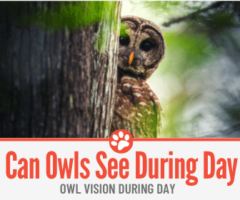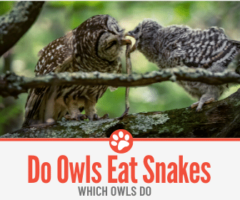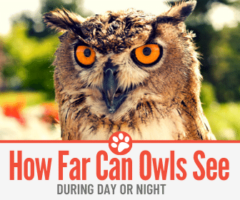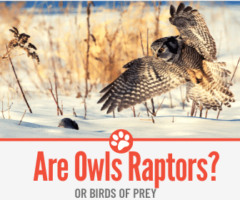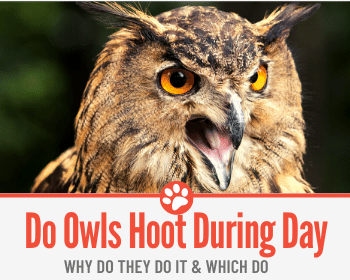 Owls are one of the most interesting nocturnal species within birds. They are frequently known for being active at night and sleepy throughout the daylight.
Owls are one of the most interesting nocturnal species within birds. They are frequently known for being active at night and sleepy throughout the daylight.
One fascinating aspect of these animals is how they communicate.
Owls possess a distinctive sound, and I bet I’m not the only one wondering if they hoot during the day, or it is just a night thing.
Do Owls Hoot During the Day?
Yes, some owls Can hoot during the day. If you happen to hear an Owl hooting during the day it is most likely that it’s pygmy owl or barred owl that you are hearing.
They are Known To Hoot During the day as they are diurnal owls and can be active during the day, which is very uncommon compared to other owls.
Hooting represents an inherent vocal sound that most of the owls emit. Yes, not all of them make this sound! In fact, they can perform others like growls, shrieks, or barks. It is the case of the Barn owl. They don’t hoot! They shriek.
The vast majority of animals make sounds to express something. For example, the most common owl hoot that you could easily detect is from the great horned, and probably it is to claim a territory.
They are very protective of their habitat and will express it by all means.
Why do owls hoot during the day?
All living creatures feel the need to express themselves, and owls are no exception. These birds are incredible hunters.
Most people believe they are awake exclusively at night, but the truth is there are some owls with the same shift as you!
The burrowing owl could hunt and hoot from 9 am to 5 pm.
For that reason, if you ever wondered if owls come out during the day, the answer is: absolutely! More than you’ve imagined.
But why would they hoot during the day? Owls hoot during the day for various reasons. Owls that stay active within the day hoot in full sunlight primarily to communicate.
They make this sound to mark territory and keep other species away from their habitat. They can also hoot during the day to express fear if they feel threatened by predators nearby.
Another reason for hooting at daylight is to attract a female partner and announcing the availability of the breeding.
The male makes several sounds until he receives a response hoot from a possible partner.
You could also hear their little hatchlings hoot during the day when they are starved.
Hooting is the first way of communication they learn, and it is the best way they have to express their needs.
What sounds like an owl during the day?
There are some animals that you can hear during the day that seem similar to the hooting of owls.
For example, some frogs make sounds that are mistaken for an owl’s hooting. Also, the mourning dove makes a sound very similar.
Many people have believed that they have an owl outside their home, and it is actually one of these birds.
Another bird tends to be confused with the owl, and that is the Wilson’s Snipe. The confusion comes with the male’s flight to draw females.
The flow of his wings makes a sound that is similar to the chirp of a boreal owl. The Wilson Snape makes this type of flight at nights too, so it’s not unusual to get confused.
When do owls hoot? At What time of the day do owls hoot?
Known to be the king of darkness, their preferred time to start hooting (ho-o-oo-o) is at nightfall. Owls stay awake all night, attentive to everything that happens around them and seeking their prey through their large eyes and incredible sense of hearing.
Owls hoot mainly when they want to mark territory and when they are looking for a mate. In the season of pairing, the male owl emits three deep calls, and the female responds with a sharper hoot.
Yes, in these species of birds, females possess a higher-pitched hoot than males.
These birds are free to hoot wherever they want. If they perceive a threat nearby during the day or night, they will probably make a sound like a bark. If the threat gets closer, they will emit a louder screech.
In conclusion, they feel safer at night from predators, and that is why the majority of them stay quiet during daylight. When they hoot it is all about communication, they want to establish their space & contact other owl mates.
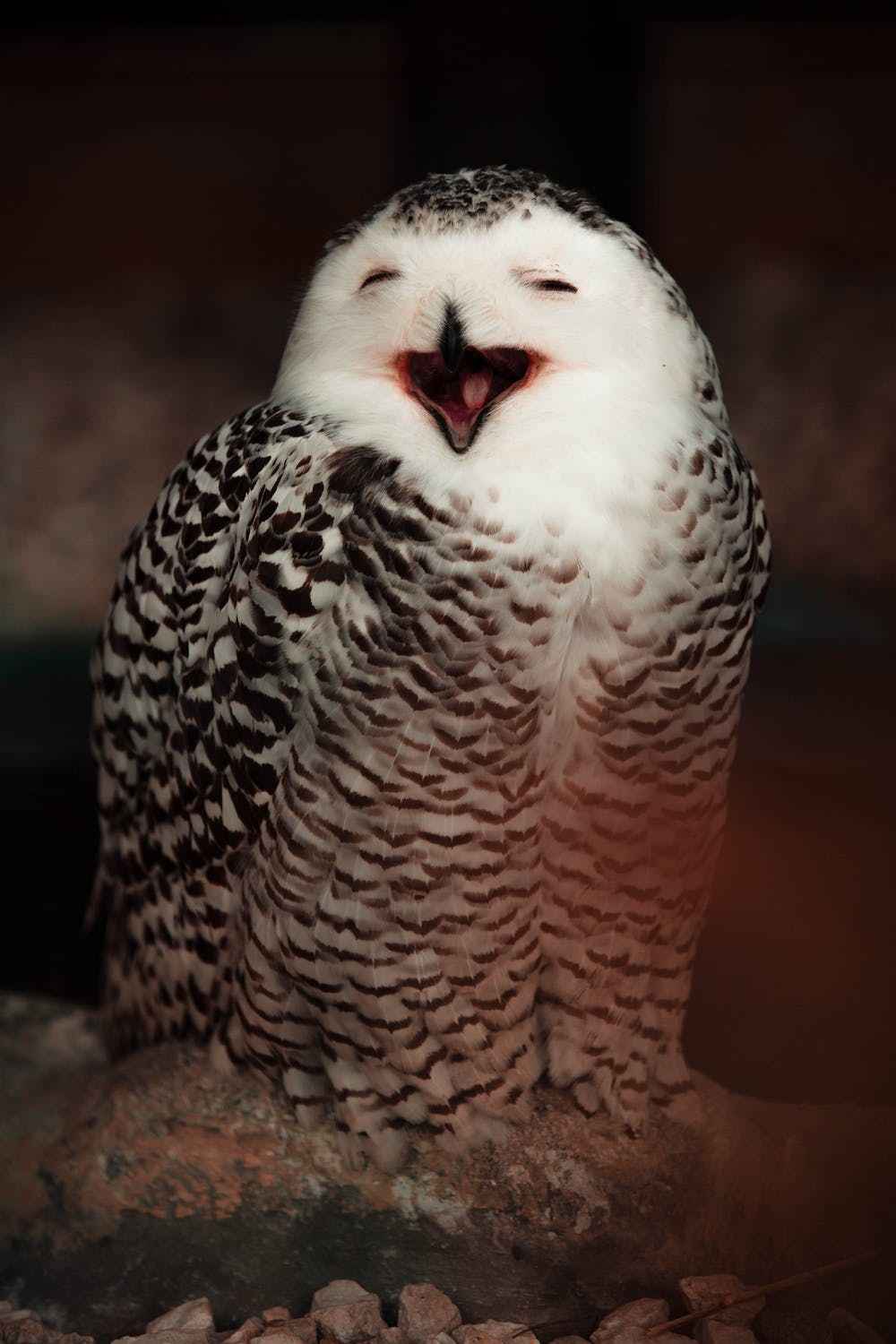
Barn owls
The barn owl is one of the most widespread species around the world. You can find them in all continents with the exception of Antarctica.
It is uncommon to observe or hear a Barn owl during the day, considering that they are nocturnal hunters.
However, it is not impossible to see one active during the day. If you ever experience this wonderful event, it means that the owl is having a hard time finding food in the evenings.
When a nocturnal animal is energetic at daylight, it is because something could be wrong. Barn owls could be active at day because they are starved, they feel endangered, or they want to protect their habitat.
The sound of this species is not like the characteristic hooting of owls; it is more like a screech. In fact, it may sound like a baby’s scream. Hear it yourself by clicking here.
Barred owls
What about barred owls? Do they hoot during the day? Yes! As we have mentioned before, barred owls can hoot at any time of the day.
Barred owls can hunt at night or during the day, mainly at dawn and sunset, so its hooting is not limited to the night like other species.
Barred Owls make diverse sounds that can be difficult to detect, such as barking or even a small screaming.
However, their best-known hooting is the “hissing” when they are threatened or feed their hatchlings. This owl also emits similar sounds to a high-pitched cry, something that could be terrifying if we listen to it at night. Click here to hear its sound and learn more about this breed of an owl.
Great horned owls
Great horned owls are completely nocturnal, so you may not get to hear this species during the day. You can see them when night falls, sitting on tree branches or flying around. Their hooting regularly consists of four to five deep screams in a row.
It will be extremely challenging for you to approach or hear this bird in the day, but not impossible. In some zones, this owl could hoot in the morning very early or, on the other hand, in the late afternoon.
During the day, like most of the owls, this one typically stays quiet in inconspicuous spots such as barns, and even in the middle of rocks.
This type of owl emits a lower and deeper sound than barred owls.
If they are defending their territory, their hooting is more like a shriek. The sound of this type of owl can also sound like a cat’s meow.
So don’t get confused with the neighbor’s cat. Here you can listen and see the lovely great horned.
More Interesting facts about owls!
Is it good luck to hear an owl during the day? As we mentioned throughout the article, hearing a hooting during the day could be completely normal. Some different species of owls are active at day and make sounds to communicate.
On the other hand, there are different beliefs and symbolism around seeing or hearing an owl. For instance, native American Indians believed that the owl represented a bad omen. According to myths in some tribes, the symbol of an owl depicted death.
Where do owls go during the day? Most owls rest during the day. They sleep in hollow trees, crevices, abandoned structures, or in the branches of their typical habitat. Did you know that owls are the kings of camouflage?
Although you may be unable to visualise them so easily during the day, it is possible that you have one just in the tree in front of you!
Thanks to its ability to camouflage, its feathers merge with the trunks, and that is how they protect themselves from daytime predators.

Why owls have a bad reputation? In ancient towns, for being a nocturnal animal, the owl has always been related to darkness, shadows, and bad omens.
Today many people still believe that listening to them during the day or at night is bad luck. On the contrary, there are cultures that associate owls with wisdom, kindness, and good luck. What do you believe?
Now that you know much more about owls and their hooting, I’m sure you’ll want to listen more carefully!

